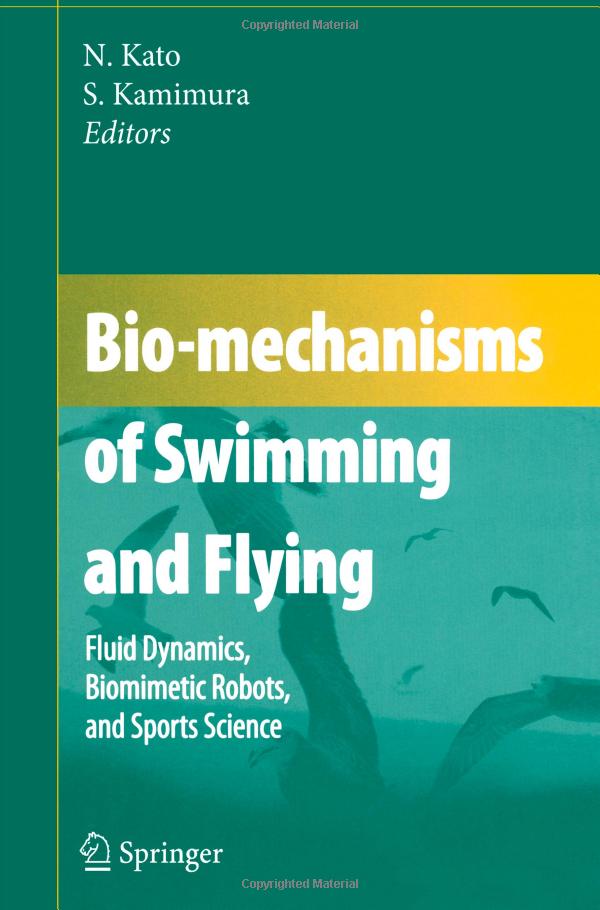Biomechanics studies of animals in swimming and flying can serve an increasing role in understanding the mechanisms that enable animals to move effectively and efficiently in fluid, as well as analyzing the characteristics of their various forms of behavior in fluid.
These areas of research, which form the basis of this volume, include the locomotive mechanisms and behaviors of animals in swimming and flying ranging from microorganisms to dolphins from the biological aspect, hydrodynamics of swimming and flying, biomimetic swimming or flying robots, and sports science.
This book follows "Bio-mechanisms of Animals in Swimming and Flying" published in 2004 including 11 chapters. This time, the book includes 31 chapters on the latest researches into natural autonomous systems and locomotion in both flying and swimming organisms. The area of sports science such as analysis and simulation of human swimming is newly added. The computational frameworks for the modeling, simulation and optimization of animals in swimming and flying demonstrate an important role in the progress of interdisciplinary work in the fields of biology and engineering.
Biological Aspects of Locomotive Mechanisms and Behaviors of Animals While Swimming and Flying
- Chapter1: Asymmetric Swimming Motion of Singly Flagellated Bacteria near a Rigid Surface
- Chapter2: Properties of a Semi-dilute Suspension of Swimming Microorganisms
- Chapter3: Dynamics, Modeling and Real-time Observation of Galvanotaxis in Paramecium caudatum
- Chapter4: Object Manipulation by a Formation-Controlled Euglena Group
- Chapter5: Passive Mechanisms Controlling Posture and Trajectory in Swimming Fishes
- Chapter6: Mechanical Properties of the Caudal Fin Resulting from the Caudal Skeletal Structure of the Bluefin Tuna
- Chapter7: Design of Artificial Tail Flukes for a Bottlenose Dolphin
- Chapter8: Changes in Drag Acting on an Angled Wavy Silicon-rubber Plate as a Model of the Skin Folds of a Swimming Dolphin
- Chapter9: Central Nervous System Underlying Swimming Fish
- Chapter10: Underwater Acoustical Sensing Behavior of Porpoises
- Chapter11: Microstructural Approach to Developing the Resonance Model of the Indirect Flight Mechanism
Hydrodynamics of Swimming and Flying
- Chapter12: Studies of Hydrodynamics in Fishlike Swimming Propulsion
- Chapter13: Optimization of Fish Shape and Swim Mode in Fully Resolved 2-D Flow-field by Genetic Algorithm with the Least-square Prediction Method
- Chapter14: Modeling, Simulation and Optimization of Anguilliform Swimmers
- Chapter15: A Numerical Study of Hovering Aerodynamics in Flapping Insect Flight
- Chapter16: Stabilization of Flapping-of-Wings Flight of a Butterfly, Considering Wakes
- Chapter 17: 3-D Unsteady Computations of Flapping Flight in Insects, Fish, and Unmanned Vehicles
Biomimetic Swimming or Flying Robots
- Chapter 18: Design and Simulations of a Virtual Fishlike Robot Actuated by a Muscle Model
- Chapter 19: Development of Fish Robots Powered by Fuel Cells: Improvement of Swimming Ability by a Genetic Algorithm and Flow Analysis by Computational Fluid Dynamics
- Chapter 20: Design and Control of Biomimetic Robot Fish FAC-I
- Chapter 21: Thrust Force Characteristics of the Propulsion Mechanism in Fluid Using a Fin with a Dynamic Variable-Effective-Length Spring
- Chapter 22: Elastic Pectoral Fin Actuators for Biomimetic Underwater Vehicles
- Chapter 23: Design, Development, and Testing of Flapping Fins with Actively Controlled Curvature for an Unmanned Underwater Vehicle
- Chapter 24: Controlling Biomimetic Underwater Robots with Electronic Nervous Systems
- Chapter 25: Micro-energy Converter Using Insect Wings
- Chapter26: Clapping-wing Micro Air Vehicle of Insect Size
Sports Science
- Chapter 27: Study on the Application of Lagrangian Numerical Simulation to Fluid Dynamics in Sports Science
- Chapter 28: Rowing Velocity Prediction Program Estimating Hydrodynamic Load Acting on an Oar Blade
- Chapter 29: Analysis of Breast, Back and Butterfly Strokes by the Swimming Human Simulation Model SWUM
- Chapter 30: Research in Fluid Dynamical Specification of Hand Palms in Freestyle Swimming
- Chapter 31: Flexural Vibration of a Jump Ski in Flight

